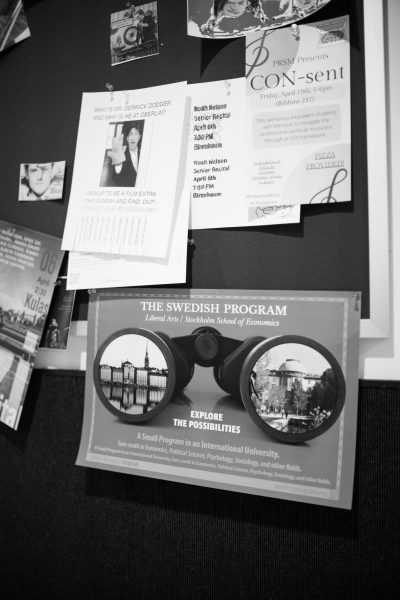Oberlin Community Should Push for Drug Harm Reduction Policies
As a progressive institution, Oberlin is uniquely poised to stand at the forefront of a new generation of harm reduction policies for drug usage. Overdose rates are up, current policy is failing, and it’s time for us to provide members of our community with ways to reduce harm while using substances.
It is essential that we recognize that people will engage in certain behaviors regardless of legality or social acceptance — substance use is one of these behaviors. Therefore, it makes more sense to provide resources for people to make educated decisions about safe drug usage rather than to enforce policy that punishes individuals for making decisions about their own bodies. This is what harm reduction is all about: working to minimize the potential harms that members of our community might incur.
Changing how people think about drugs and drug users requires first acknowledging that, from a societal standpoint, drugs are associated with poor morality in this country — and it’s not by accident. Campaigns like Just Say No and D.A.R.E. have willfully concealed the racial and political histories behind the stigmatization of drugs. The prison industrial complex is a major example of this phenomenon — it profits from continuous streams of inmates, and there is an enormous racial disparity in who is incarcerated for nonviolent drug offenses. Despite the federal government’s efforts to eradicate illegal substance use altogether through means such as laws and mass incarceration, high overdose rates and adulterated substances still dominate national headlines.
In 2017, more than 70,200 Americans died from drug overdoses, including overdoses from prescription opioids. Many of these cases also involved other drugs. Forty-four percent of benzodiazepine users are currently dependent because of inadequate education from healthcare professionals. Cartel violence and drug war-related deaths continue to rise despite stringent drug laws and excessively high amounts of law enforcement funding. Things are getting worse, and it’s abundantly clear that increasing our drug penalties has not stopped — or even slowed — our problems.
Still, we shy away from discussing the presence of drugs in our communities. Drugs are taboo, whispered about in middle school bathrooms or warned against by parents via blatant lies based in fear. Many users — especially inexperienced ones — have no idea what they’re doing, because no one is around to have a conversation with them that isn’t based in shaming or diversion.
And here we are in Lorain County — a community hit hard by opioids, in the middle of a state where cocaine cut with fentanyl has killed 3,000 people in the last year. There has never been a more critical point to start enacting substantial change, especially in the Midwest where the opioid epidemic continues to rage.
Drug-related issues will not go away overnight, nor will instant legalization solve the problems we currently face. Beginning to rectify our twisted lationship with substances requires a multipronged approach that involves fact-based drug education, trust, support for those struggling with addiction, withdrawal, or safe consumption, and — most importantly — transparency among community members about what is really going on with substance users. On a local scale, we are perfectly capable of holding workshops and syringe exchanges, as well as drug checking services. Both these measures would help to ensure that if someone is using, they are doing so as safely as they possibly can.
Injection sites and factual drug education are often denounced on the basis that they supposedly encourage use and therefore should not be implemented. However, if the number of complications and deaths from drug use goes down — which is what has happened at every safe injection site and drug education center in the U.S. — yet these places are still rejected, is the concern really about the users? Or is it about maintaining the deep-seated attitude that drugs are inherently evil? Are we so entrenched in moral arguments that we allow overdose rates to climb instead of implementing safety measures? And, if it so happens that a substance is safer than we tend to think, are we so determined to maintain our existing image of drug usage that we refuse to admit we might be wrong?
I ask you to consider whether Oberlin’s community is invested enough in those we love to consider that perhaps many Americans have actually been wrong about drugs all along. More importantly, I ask whether Oberlin students and townspeople are willing to take a step toward positive social change with drugs — both in Oberlin and in the surrounding communities — just as it has taken steps toward positive social change at so many other points in history.


